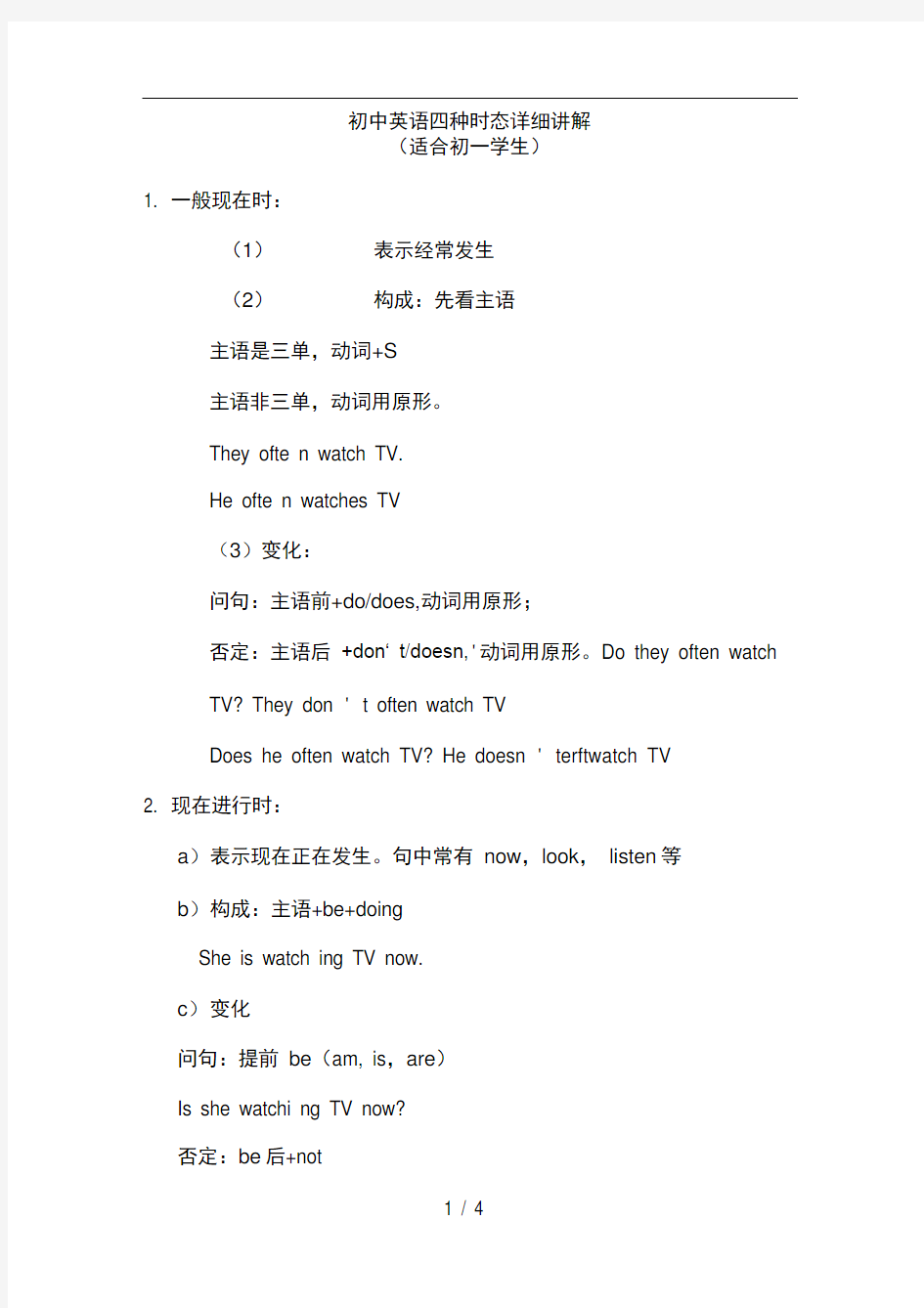初一英语四种时态讲解

- 1、下载文档前请自行甄别文档内容的完整性,平台不提供额外的编辑、内容补充、找答案等附加服务。
- 2、"仅部分预览"的文档,不可在线预览部分如存在完整性等问题,可反馈申请退款(可完整预览的文档不适用该条件!)。
- 3、如文档侵犯您的权益,请联系客服反馈,我们会尽快为您处理(人工客服工作时间:9:00-18:30)。
初中英语四种时态详细讲解
(适合初一学生)
1. 一般现在时:
(1)表示经常发生
(2)构成:先看主语
主语是三单,动词+S
主语非三单,动词用原形。
They ofte n watch TV.
He ofte n watches TV
(3)变化:
问句:主语前+do/does,动词用原形;
否定:主语后+don‘ t/doesn,'动词用原形。Do they often watch
TV? They don ' t often watch TV
Does he often watch TV? He doesn ' terftwatch TV
2. 现在进行时:
a)表示现在正在发生。句中常有now,look,listen等
b)构成:主语+be+doing
She is watch ing TV now.
c)变化
问句:提前be(am, is,are)
Is she watchi ng TV now?
否定:be后+not
She isn ' t watching TV now.
d)加ing的方法:
—般直接+,去不发音的e加,闭音节双写+。
3. 一般过去时:
a)表示过去的动作或状态,句中常有yesterday, last等过去的时间。
b)构成:
动作:主语+动词的过去式
状态:主语+was/were句中没实意动词)
Shewatched TV last ni ght.
Shewas here last ni ght.
c)变化:
问句:主语前+did,动词用原形
Did she watch TV last night?
Was she here last ni ght?
否定:主语后+didn '动词用原形。
She didn ' t watch TV last night.
She wasn ' t watch TV last night.
⑷过去式:
一般+ed;e结尾+d;辅音+y的,去y+ied;闭音节双写+ed;不规则的120页。
4. 一般将来时:
a)表示:将来,句中有表示将来的时间:tomorrow、next、soon, in two days 等
b)构成
A:主语+will+do (任何人称)
B:主语+shall+do (仅第一人称I,we)
C:主语+be goi ng to +do 女口:
A: She will watch TV this evening.
B: We shall watch TV this evening.
C: Sheis going to watch TV this evening.
c)变化
问句:提前will/shall/be
A:Will she watch TV this …?
B: Shall we watch TV …?
C: Is she going to watch …?
否定:在will /shall/be 后+not
A: She won ' t watch TV …
B: We shall not watch …shan 't C: She isn ' t going to watch … There is a meet ing n ext week.
There was a meet ing yesterday. There will be a meeting next •…
=There is going to be a meeting next
